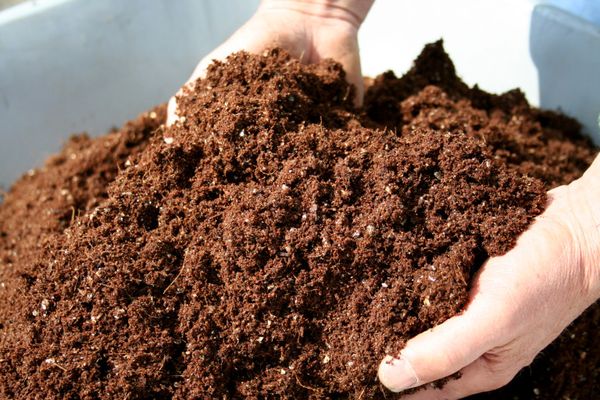At present, small areas are allocated for garden plots, where it is not possible to leave the land for steam, but it is also problematic to observe crop rotation. Each gardener or a gardener understands that for the cultivation of organic fruits and vegetables for his family requires certain skills. Despite this, it is easier to buy and fertilize the soil, many prefer to put humus into the ground, which they have made on their own.
Table of contents
What is humus
- a kind of fertile land that consists of rotted manure and plant weed residues, extra planted earlier cultivated plants, empty stems of annual flowers and sunflower, fallen leaves.
- this priming wherein many useful nutrientsit is used for growing and feeding seedlings of cultivated plants and vegetables, increasing the growth of shrubs and trees, extending the period of flowering of indoor plants, is an organic fertilizer and provides value for application as a fertilizer.
- in appearance, humus is a porous dark brown earth, without a sharp, putrid odor, loosened, the remains of plants should not be present in it.
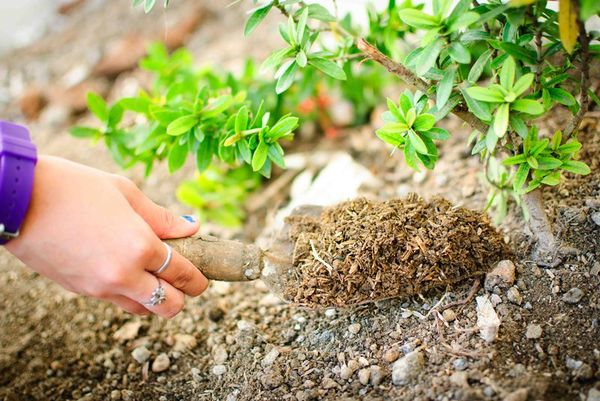
Species
Sheet
Collecting fallen leaves in rainy autumn weather is a laborious process, but the result obtained after receiving humus from them justifies the investment.
It is advisable to collect fallen leaves with a fan-like rake, then place them in specially prepared containers; these can be plastic bags for soda waste large garbage bags or a metal mesh fence with a small cell in the form of an open top box.
Along the perimeter in the walls of plastic bags it is necessary to provide holes and after compaction with leaves. plenty of water and tie (urea can be added), it is necessary to store the bags in a secluded place (or even in the cellar) where plants are not planted.
After collecting leaves in the fall under the trees pests do not startand diseases that prevent their growth and the cultivation of a good crop do not develop.
In this humus, there are few nutrients and microelements, but when introduced into the soil it retains moisture at the roots (especially in dry weather), favorably influences the reproduction of earthworms, which loosen the soil and contribute to equip it with air.
Additionally, leaf humus is used to shelter vegetable crops such as tomatoes, cucumbers, peppers, and soil mulching is created that prevents drying,acidifies the soil and is air-conditioned; it can also be used as a cultivator for indoor plants and previously prepared humus for shelter in the winter of flowers and a vineyard (protects against freezing).
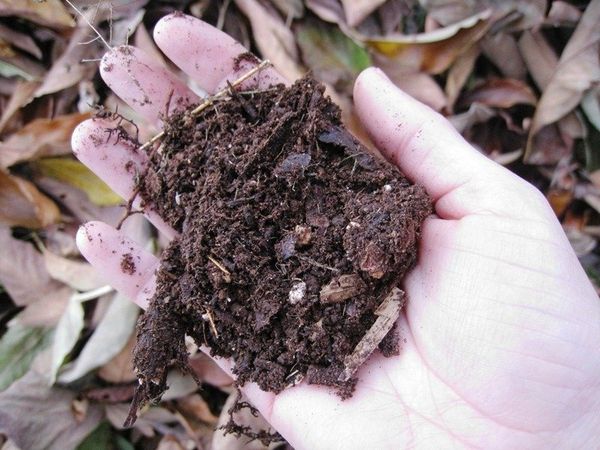
The leaves of fruit trees are prepared as humus. about one year, and needle (conifers) during 2-3 years (when harvesting, it is desirable to grind them). Crumbly humus is obtained from the leaves for 1.5 - 3 years.
From manure
Manure humus is a type of fertile land produced from concentrated decomposed manure.
Humus from manure is formed from animal waste, residues of vegetable feed and animal litter, which decomposes for a long time, should not have a sharp smell, loose, earthy color and is used as a good organic fertilizer.
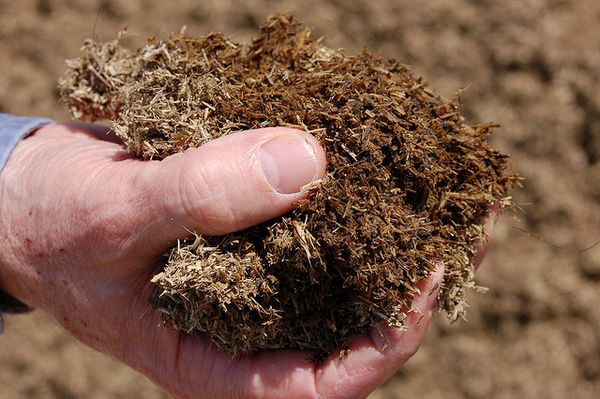
How to use humus as a fertilizer
In the spring, fertilizing from humus is introduced into the holes and grooves before planting seeds and seedlingsYou can also feed the soil of vegetables planted in the fall (garlic, carrots, onions). A large percentage of this fertilizer is applied to the boxes or greenhouses where the sprouts spikes as a mulching agent and feeding the planted seedlings.
Under the trees, bushes and potatoes humus is better to make in the autumn, and under vegetable cultures on the contrary, it is required to bring before diggingthat is, in the spring.
If the manure humus is not sufficiently decayed, then large parts of the manure can be soaked in a container with water (1: 1), let it stand for a week and water the bushes with the prepared solution as a liquid fertilizer (water carefully, it is not recommended to pour it under the root).
You can make manure in the fall, scatter under the snow, but after snow melting there is a large number of weeds that will need to be removed and weeded to prevent overgrowth.
To prepare organic fertilizer from manure, you need to level the pile until it becomes loose and leave for 5-7 days for "fermentation", in the future a pile of manure is covered with earth thick up to 10 cm and close the film (to maintain high nutritional value).In the spring, the land is removed, and the film is left.
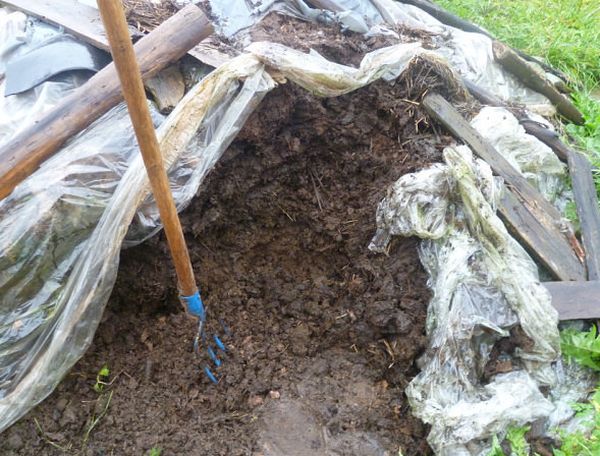
Cooking extra fertilizer with your own hands
At the cottage or backyard, you can cook "mixed" humus.
- In a secluded place dug pit in the ground (size 1.5 m2, and a depth of about 0.5 ‑ m).
- The walls are laid with iron (can be used) or slate residues.
- We fold grass from weeding, you can leave food of plant origin, as well as add a little bird or other manure that is available.
- Pour land and water while adding grass.
- At the end of the summer period, it is desirable to perform work on mixing the future of humus laid in the pit.
For a fertile compost within one year not recommended to add large roots, especially from the old strawberry bushes, as they are dense and it is better to dry and burn them, and then use the ashes for additional feeding (especially when planting cabbage).
This type of fertilizer is important for top dressing of bushes, trees, all plants, as the land becomes more fertile, the soil structure increases, it has a positive effect on the content of nutrients in grown foods, increases the amount of grown crops without harmful and toxic impurities.
